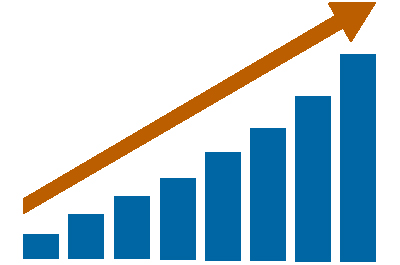- Home
- About Us
- Activities
- SDG-01: No Proverty
- SDG-02: Zero Hunger
- SDG-03: Good Health and Well-Being
- SDG-04: Quality Education
- SDG-05: Gender Equity
- SDG-06: Clean Water and Sanitation
- SDG-07: Affordable and Clean Energy
- SDG-08: Decent Work and Economic Groth
- SDG-09: Industry, Innovation and Infrastructure
- SDG-10: Reduced Inequalities
- SDG-11: Sustainable Cities and Communities
- SDG-12: Responsible Consumption and Production
- SDG-13: Climate Action
- SDG-14: Life Below Water
- SDG-15: Life On Land
- SDG-16: Peace, Justice and Strong Institutions
- Notice Board
- Wings
- Gallery
- Docs
Get Involved
Make a Donation
Economic Development (Food Security, Agriculture, IGA, Market development, Technology Transfer
The poverty ratio of Bangladesh has declined sharply from close to 60% in the early 1990s to 40% in 2005 to 31.5% in 2016 23.5% and it is expected to reduce in 18.6% by 2020. However, the number of poor people is still large, which is around 50 million. 24.3% are in still below poverty line in 2016. The hard core poor are 12.9 %( below $3/day) in 2016 (World Bank 17 October, 2017). This was about 17.6% in 2010, and 25% in 2005. These people need assistance for sustenance. According to the latest HIES based estimates, Extreme Poverty Incidence in Bangladesh is still now a major concern and directly linked with low productivity trap.
Bangladesh is the 8th largest population of the world .Total population of Bangladesh in 2011 was 139252683 (BBS) and 162,951,560 in 2016 and it will be 239 million by 2050 (BBS). In 1950 there was 6% older (above 60 age) population and 41% younger population, in 2017 there is 18.8% younger population (Economic review), In 2020 there will be 8% older population and 25% younger population, in 2030 there will be 12% older population and 22% younger population, in 2050 there will be 22% older population and 16% younger population in Bangladesh. By 2050 there 1 in 5 people will be over 60 (Help Age International).
That means Bangladesh can take the advantage of young people up to 2050. After 2050 the rate of the youth will be decrease day by day and Bangladesh will be the country of old aged people. Every country gets this opportunity ones a time. If a county failed to use the power of the youth than it becomes burden ultimately. To use the power of the youth needs to build up skills of the youth. Every year 1.3 million youths enter job market in Bangladesh (WB). But it’s unfortunate that there has shortage of trained youth in our country. Lack of skill is the main factor behind the unemployment in Bangladesh and this gap is fillupping by the foreign labours. There are above 2 lac foreign labour working in Bangladesh who is taking home above $5b every year (The Daily Star, 31 December, 2015).
If we consider education as an important element in employability, the LFPR showed a rising trend for those with primary, secondary, and tertiary education in 2015–16. The group with tertiary education showed the highest LFPR of 77.5 per cent, primary education 65.7 per cent, no education 59.3 per cent, and secondary education 52.1 per cent. Among whole of the youth 83.28% are educated and among of them 80.61% are males and 85.83% are females (UNESCO Institute for Statistics 2016). One-third (32.5 per cent) of the employed lack of formal education. More than 15.4 million employed workers (25.9 per cent) have completed primary education, while more than 17.9 million (30.1 per cent) have completed secondary education. Around 96 percent of the 57 million workers in the domestic labor market at best have only secondary education.
The BBS report stated that among the effective workforce of around 109,100,000 people, around 2,680,000 currently remain unemployed. Around 26 lakh of the 6.21-crore-strong labour force of Bangladesh were unemployed in 2015–16 (BBS). In 2007 there were 4% unemployment , in 2008 there were 3%, in 2009 there were 4.5% in 2010 there were 4.5%, in 2012 there were 4.3%, in 2013 there were 4.3%, in 2015 there were 4.2%, in 2016 there were 4.1%, in 2017 there were remain 4% unemployed. Service Sector Plays a Dominating Role in Growth of Economic Units after agriculture. According to labour survey 2015 which is 36.9 per cent. There were 2.6 million unemployed people in 2015–16. Total of 3,700,000 people gained employment in FY 2016-2017 where there service sector employed a total of 23,700,000 people in the FY 2016-17 (labour force survey report by the BBS).
Male and female employed youth constitutes 69.50 per cent and 38.22 per cent respectively of the total employed youth(The financial express 13 April 2016). The RMG (ready-made garments) sector has successfully attracted a large number of young female workers. Currently this sector employs 3.2 million female workers among the total 4.0 million employed, according to BGMEA (Bangladesh Garment Manufacturers and Exporters Association). The labour force participation rate (LFPR) for females was 35.6 per cent in 2015–16, and 33.5 per cent in 2013. There has decrease in the number of unpaid family helpers to 8.6 million in 2015–16 from 10.6 million in 2013. For females, it decreased by 1.7 million (20.2 per cent) in 2015–16, from 8.4 million in 2013. Most of the people outside the labour force were female, but the number decreased by 1.6 million (4.4 per cent) to 34.5 million in 2015–16 from 36.1 million in 2013. The female unemployment rate was 6.8 per cent in 2015–16 and 7.3 per cent in 2013. The unemployment rate of females in the 20–24 age group was higher (12.8 per cent) than that of males (9.1 per cent).
ESDO Contributing to this sector through different project like- Planning and Implementation of Income and Livelihood Restoration Plan & Implementation of Resettlement Action Plan, Strengthening Household Ability to Respond to Development opportunities (SHOUHARDOIII), School Feeding Programme under country programme, School Feeding Programme in Poverty Prone Areas, Strengthening Women’s Ability for Productive New Opportunities (SWAPNO), Promoting Agricultural Commercialization and Enterprises (PACE) project, Learning and Innovation Fund to Test New Ideas(LIFT), Goat Breeding Farm, Food Security 2012 Bangladesh (UJJIBITO), Enhancing Resources and Increasing Capacities of the Poor Households Towards Elimination of their Poverty (ENRICH)” , Skills for Employment Investment Program (SEIP), Amader Bazar, Culture and Sports Program, Pre Vocational Training (PVT) program , Reaching Out of School Children (ROSC) phase-II Project.
But this not enough to improve Food Security, diversified agro, IGA, Market development, Technology Transfer need more support. HELP US and, be a part of to the economic development of the country.
How to Donate
Bank Name: Agrani Bank Limited
Account Name: Eco-Social Development Organization (ESDO)
Account Number: 0200001304136
Bank Address: Thakurgaon Branch, Thakurgaon, Bangladesh
Bank SWIFT Code: AGBKBDDH
Bank Code: 2921
Routing Instructions for Disbursements: 010940976
Head Office
-
Address: Collegepara (Gobindanagar),
Thakurgaon-5100, Bangladesh - Phone: +880 561 52149
- Email: [email protected]
-
Saturday - Thursday: 08:30 am - 05:00 pm
Friday - Friday: Closed
Dhaka Office
-
Address: ESDO House, Plot #748, Road #08,
Adabor, Dhaka-1207, Bangladesh - Phone: +880 2 58154857
- Email: [email protected]
-
Saturday - Thurseday: 08:30 am - 05:00 pm
Friday - Friday: Closed

















